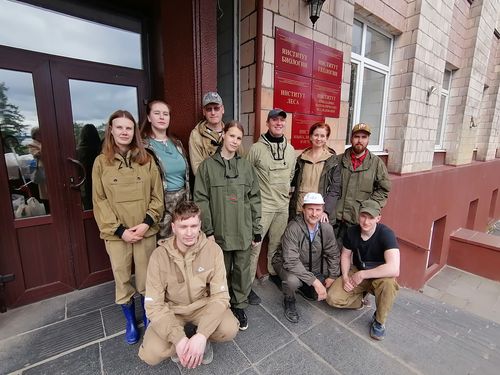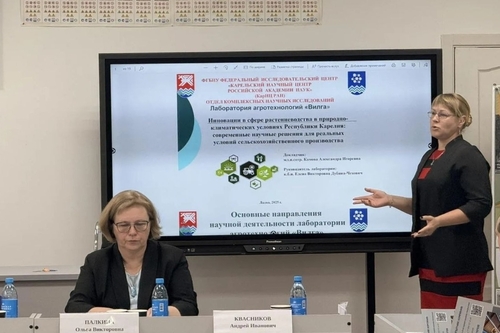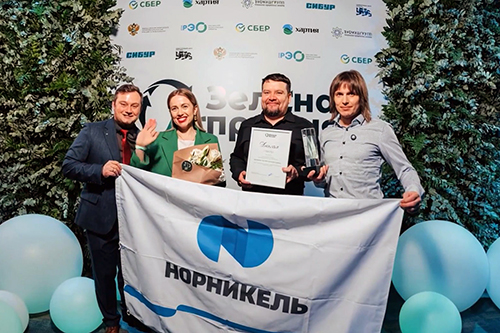Forest tending often includes thinnings implying the removal of trees that hinder the growth of the target species.
– Thinnings promote timber gain through optimization of the stand density. Regulation of the species composition by thinning helps form high-productivity stands composed the target species which the region’s forest industry needs most, – explains Aleksey Pekkoev, Head of the Laboratory for Boreal Forest Dynamics and Productivity FRI KarRC RAS.
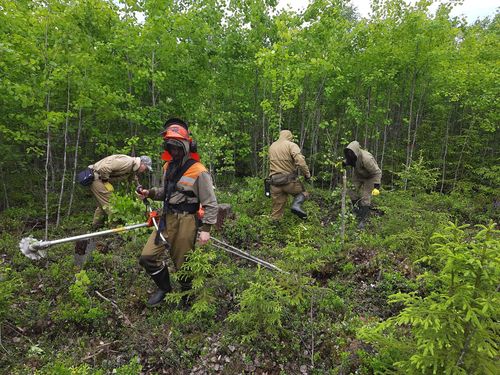
Scientists doing the first thinning
Thinnings not only eliminate competition from “unwanted” woody vegetation but also alter the light conditions and, in effect, change the microclimate parameters in the habitat. In this experiment, researchers carried out the first thinning: aspen and birch was totally removed from six plots and retained in the other six. In the coming two years, scientists will monitor the microclimate in the plots, the growth of spruce, the ground vegetation and the soil. Special focus will be on the adaptation mechanisms of trees at the physiological and biochemical levels.
– Spruce growing under aspen canopy developed shade foliage and the water regime and other physiological processes were tuned specifically to this environment. An abrupt change in lighting conditions causes stress for the plants. From the silvicultural perspective, these things have already been studied: shade foliage is replaced by sun foliage, growth is inhibited at first but then, vice versa, it is accelerated. The mechanisms (physiological, biochemical, molecular genetic) of this process are, however, not yet fully known. We, physiologists, are very curious about this object, – tells Natalia Galibina, research leader, Chief Researcher at the Laboratory for Woody Plant Physiology and Cytology FRI KarRC RAS.
In particular, physiologists will investigate how the photosynthetic system of spruce is altered to adapt to changes in the habitat and how these transformations influence the quality of the newly-formed timber. They will study the activity of the genes responsible for the initiation of stomata, – vitally important structures in leaf epidermis, which act the channel for gas exchange and water movement and evaporation. The number of stomata depends on the light conditions, carbon dioxide content in the air, and humidity. When the season is over, scientists will estimate their density in each variant of the experiment and identify the contribution of the genes responsible for stoma initiation to their abundance depending on light conditions. According to Natalia Galibina, no such studies have been carried out with spruce before.
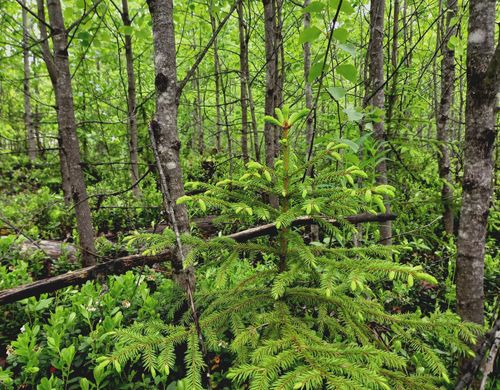
Spruce under aspen canopy
– By the end of the two-year experiment, we’ll have a cross-section of empirical data for a number of parameters related to transport of substances, water regime, photosynthesis, sugar assimilation by plants. We’ll also get a series of anatomical indices: number of wood cell rows (early and late tracheids), changes in their cell wall thickness, wood chemical composition. We will have collected interesting material on the first stages of spruce tree adaptation to a sharp change in light conditions, – the research leader remarked.
She also emphasized the multidisciplinarity to the study.
– Our common study object is the forest and woody plants. Designing an experiment in the natural environment, where everything is interrelated, one has to adopt an integrated approach. That is why we assemble teams with specialists in different disciplines dealing with their specific tasks: in addition to physiologists, there are silviculturists to consider issues caused by human impact on forests, geobotanists to study how the ground vegetation responds to changes in the habitat, soil scientists to track changes in the soil.
The data obtained through this study will help more accurately model the effect of high light on spruce and to find the most effective forestry protocol, which would be less stressful for trees. Ultimately, the data can form the basis for preparing guidelines for silvicultural operations.
Photos by Aleksey Pekkoev and Natalia Galibina




